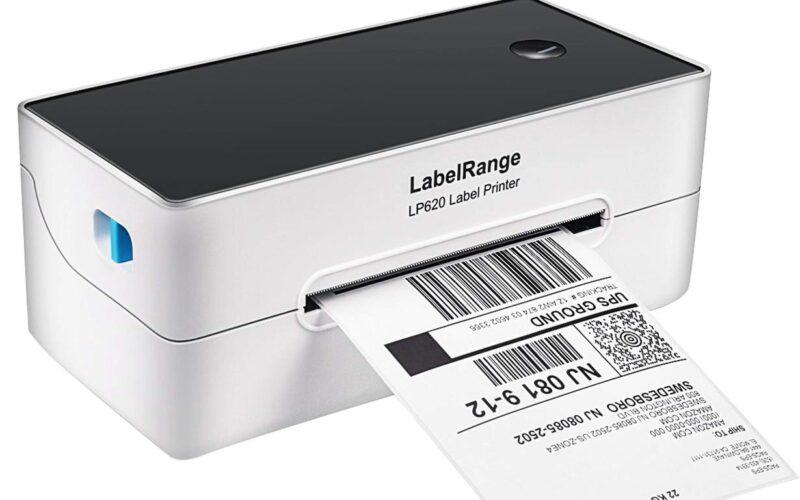
When labelling food products, choosing the correct label materials is critical. Not only do food labels need to be eye-catching and informative, but they must also be durable and safe for consumption. With so many food label printing options available, it can be challenging to determine which materials are the best fit for your products. In this blog post, we’ll discuss some of the most common label materials for food products and help you choose the right one for your business.
Paper Labels
Paper labels are one of the most popular options for food label printing. They are affordable, versatile, and available in various finishes, including glossy, matte, and textured. Paper labels are also easy to print on, making them an ideal choice for businesses needing to produce large quantities.
However, paper labels may not be the best choice for all food products. They are not particularly durable and can be susceptible to moisture or other environmental damage. Additionally, some paper labels may not be suitable for direct contact with food, as the adhesives or inks used in the printing process may contain harmful chemicals.
If you choose to use paper labels for your food products, selecting a high quality label printer specifically designed for food labelling is important. Look for labels certified as food safe and ensure that they are printed using non-toxic inks.
Plastic Labels
Plastic labels are another popular option for food product labelling. They are typically made from materials such as polypropylene or vinyl, which are durable and resistant to moisture, heat, and other environmental factors. Plastic labels are also available in various finishes, including glossy, matte, and clear.
One of the main advantages of plastic labels is that they are suitable for direct contact with food. They often label items such as bottled water, juice, and other beverages. Additionally, plastic labels can be printed using various printing methods, including digital and flexographic printing, which allows for high-quality, full-colour graphics.
However, plastic labels can be more expensive than paper labels, which can be a consideration for businesses with tight budgets. Additionally, some consumers may be concerned about the environmental impact of plastic labels and may prefer products that use more sustainable materials.
Biodegradable Labels
As consumers become more environmentally conscious, there is an increasing demand for biodegradable labelling options. Biodegradable labels are made from materials that will break down over time, reducing their environmental impact.
One of the most common materials used for biodegradable labels is PLA (polylactic acid), made from renewable resources such as cornstarch. PLA labels are durable and suitable for direct contact with food, making them an excellent choice for businesses that want to minimise their environmental impact.
However, biodegradable labels can be more expensive than other materials and may not be as widely available as paper or plastic labels. Additionally, not all biodegradable labels are suitable for all types of food products, so it’s important to choose a label printer specifically designed for your needs.
Metal Labels
For some food products, metal labels may be the best choice. Metal labels are often used for high-end products such as wine and gourmet food items, as they provide a premium look and feel that can help enhance the product’s perceived value.
Metal labels can be made from various materials, including aluminium, stainless steel, and brass. They are durable and resistant to moisture and other environmental factors, making them ideal for products that must be stored in challenging conditions. However, metal labels can be expensive and may not be suitable for all types of food products.
Choosing the Right Label Materials for Your Food Products
When choosing the right food label printing materials for your food products, there are a few key factors to consider . Here are some tips to help you make the right label printing decision:
Consider Your Product
The first step in choosing the right label materials for your food products is to consider the type of product you are selling. Different products may require different types of labels depending on factors such as their shape, size, and storage conditions.
For example, a bottled water product may require a label that is durable and resistant to moisture, while a gourmet food item may require a premium metal label that enhances the perceived value of the product.
Consider Your Branding
Your branding is another important factor to consider when choosing label materials. Your labels should be consistent with your brand’s visual identity and convey the right message to your target audience.
For example, if you are selling organic or eco-friendly products, you may want to choose biodegradable labels to align with your brand values. If you sell luxury products, you may choose metal labels that convey a premium look and feel.
Consider Your Budget
Your budget is another important factor to consider when choosing food label printing materials. Some materials, such as metal labels, can be quite expensive, while others, such as paper labels, are more affordable.
It’s important to balance the cost of the label materials with the overall value they will provide to your business. For example, investing in premium label materials may be worth the extra cost if you are selling high-end products.
Consider Safety and Compliance
Finally, it’s important to consider safety and compliance when choosing label materials for your food products. Your labels should be safe for consumption and comply with relevant regulations, such as FDA guidelines.
Look for label materials certified as food safe and ensure that they are printed using non-toxic inks. Additionally, check any regulations that may apply to your specific product or industry to ensure that your labels are compliant.
Conclusion
Choosing the right label materials for your food products is an important decision that can impact your products’ safety, quality, and perceived value. By considering your product, branding, budget, label printer and safety and compliance requirements, you can make an informed decision and select label materials that meet your business needs.
Whether you choose paper, plastic, biodegradable, or metal labels, the key is to select materials that are durable, safe, and consistent with your brand identity. With the right label materials, you can create eye-catching and informative labels that enhance the appeal and value of your food products.





